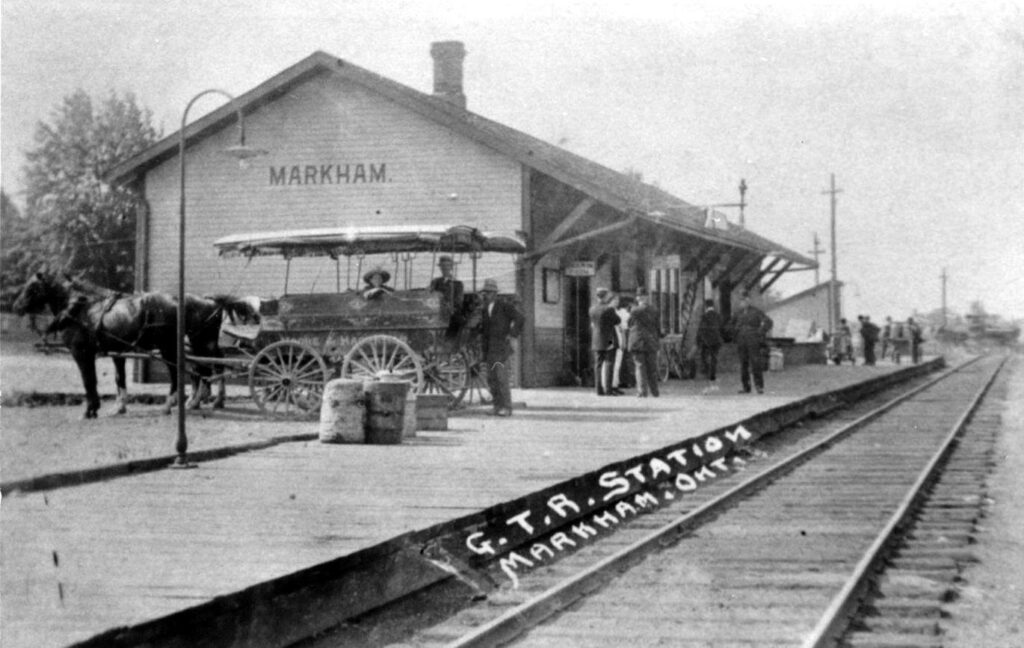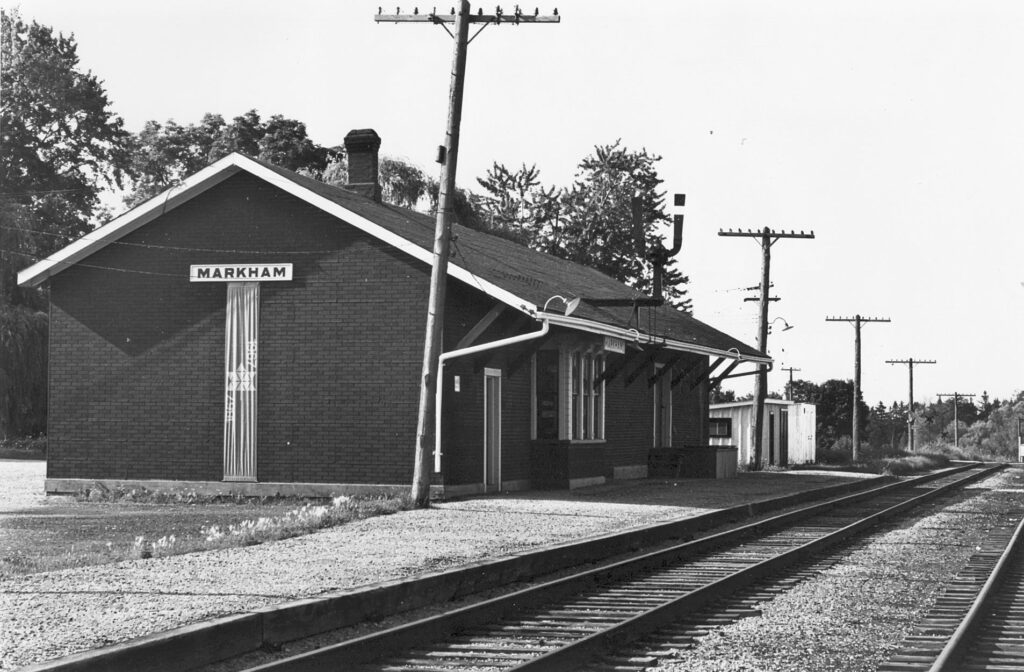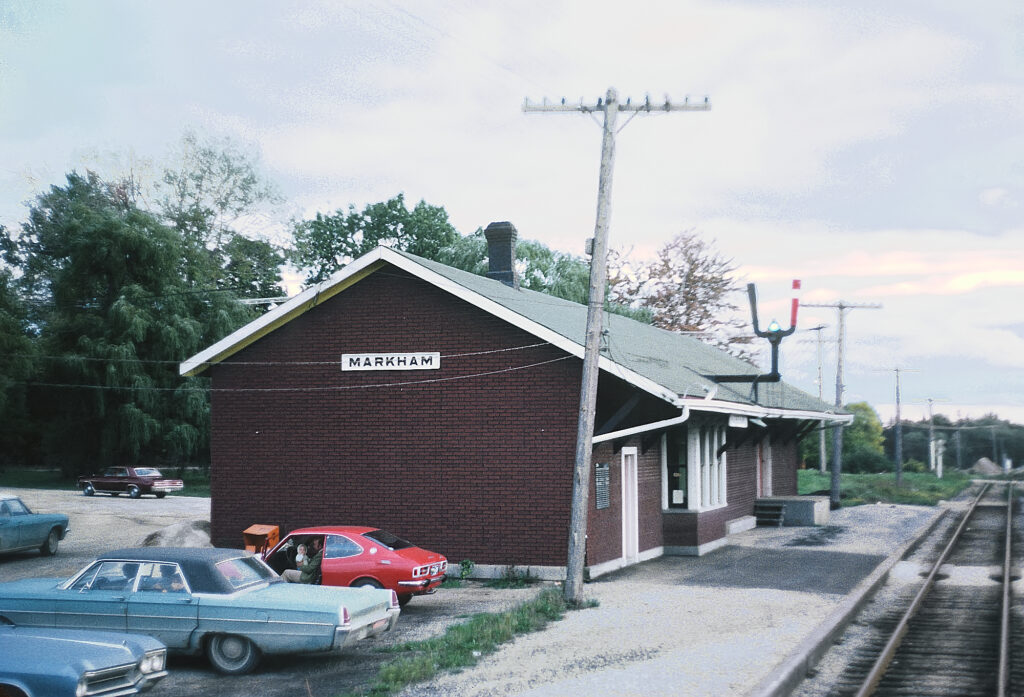Summary
Markham Station was built by the narrow-gauge Toronto & Nipissing Railway in 1871 while its construction was progressing northward from Scarborough Junction. It was a rectangular wooden structure with a “lean-to” roof to provide shelter for passengers on the platform, following a similar design to other stations built by the Toronto & Nipissing elsewhere around the same time. It contained a waiting room, baggage room, and the station agent’s office. The first train arrived from Toronto on July 1st, 1871 while construction north of Uxbridge was still underway. Service beyond Uxbridge commenced in October of the same year.
The widespread adoption of 4′ 8.5” standard gauge along with competing lines in the area contributed to the unprofitability of the Toronto & Nipissing, and it along with several other branch lines nearby sought to merge under the Midland Railway of Canada. As negotiations were ongoing in 1881, the Midland Railway financed the completion of a third rail to support standard gauge trains along the southern part of the Toronto & Nipissing. It was officially merged into the Midland Railway of Canada on on April 1st, 1882. Markham was only directly served by the Midland Railway for a short time, as the larger Grand Trunk Railway leased it starting January 1st, 1884. By 1886, the station saw a total of six passenger trains per day. While the Grand Trunk would actively replace many stations of their predecessors including those that were built by the Toronto & Nipissing, Markham Station remained relatively unscathed. A minor addition came around 1900 in the form of a bay window to improve visibility from the station agent’s office. Over the next couple of decades, the Grand Trunk encountered financial difficulties that culminated in its nationalization and subsequent merger into Canadian National in 1923.
As automobiles started to appear during the early 20th century, branch lines like this one would be among the first to feel the effects of reduced passenger ridership. Several old stagecoach routes in the area were turned into provincial highways in the 1920’s, allowing for a higher amount of car traffic and at faster speeds than before. Service to Markham would drop to five departures per day by 1940, then even further to just three per day by 1958. Canadian National gradually replaced the conventional equipment used on these trains with self-propelled Budd Rail Diesel Cars, which were much less costly to operate. Markham’s position as a bedroom community of Toronto would ultimately preserve what little passenger service remained, and what little commuter rail remained was truncated at Stouffville in 1970. By 1974, there was only one northbound and one southbound departure per day.
Canadian National spun off its passenger service as VIA Rail in 1976, and it was turned into a separate crown corporation in 1977. VIA handled service to Stouffville until it was supplanted by GO Transit in 1982, who have gradually increased service to Markham as ridership improved. The station was federally designated under the Heritage Railway Stations Protection Act in 1992, protecting it from any future attempts at demolition. The City of Markham purchased the station building in 2000 and are undertaking its restoration, using it as a community centre in addition to the existing GO Transit facilities.
Condensed Station Info:
| Location: | Served By: | Current State: | Date Built: | Date Demolished: |
| Markham Road and Station Street | T&N (1871 – 1882) MRC (1882 – 1884) GTR (1884 – 1923) CNR (1923 – 1977) VIA (1977 – 1982) GO (1982 – Present) | Active Use | 1871 | N/A |




